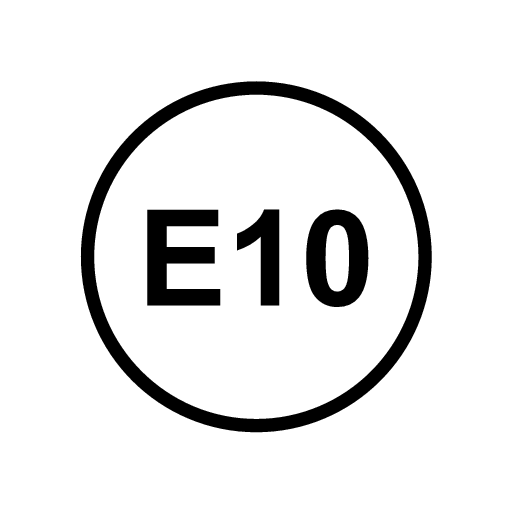Only use petrol from well-known producers. Never use fuel of dubious quality. The petrol must fulfil the EN 228 standard.
Identifier for petrol

The identifier in accordance with the CEN standard EN16942 is located on the inside of the fuel filler flap, and will be on corresponding fuel pumps and their nozzles at filling stations throughout Europe by 12 October 2018 at the latest.
These are the identifiers that apply for current standard fuels in Europe. Petrol with the following identifiers may be used in cars with petrol engine:

E5 is a petrol with maximum 2.7% oxygen and maximum 5 volume % ethanol.

E10 is a petrol with maximum 3.7% oxygen and maximum 10 volume % ethanol.
Important
- Fuel that contains up to 10 percent by volume ethanol is permitted.
- EN 228 E10 petrol (max 10 percent by volume ethanol) is approved for use.
- Ethanol higher than E10 (max. 10 percent by volume ethanol) is not permitted, e.g. E85 is not permitted.
Octane rating
- RON 95 can be used for normal driving.
- RON 98 is recommended for good power and low fuel consumption.
- An octane rating lower than RON 95 must not be used.
When driving in temperatures above +38 °C (100 °F), fuel with the highest octane rating is recommended for adapted performance and fuel economy.
Important
- Use only unleaded petrol to avoid damaging the catalytic converter.
- Fuel containing metallic additives must not be used.
- Do not use any additives which have not been recommended by Volvo.
Messages in the driver display
| Message | Explanation |
|---|---|
| Aged fuel Start engine to consume fuel | The tank contains a lot of aged fuel. Start the engine to consume the fuel. |
| Aged fuel Engine will run to consume fuel | The tank contains a lot of aged fuel. The engine is started automatically to consume the fuel. |
| Aged fuel Fill up fuel tank | The tank contains a small amount of aged fuel. Fully refuel the car in order to dilute the aged fuel. |